Does Voyager 1 Have A Camera
Ian Regan • Apr 16, 2019
Voyager Wide-Bending Views of Jupiter
Terminal month marked the 40th anniversary of the historic Voyager one encounter with Jupiter in 1979. Voyager 1 was not the first robotic visitor to Jupiter; Pioneers 10 and 11 flew by the gas behemothic in 1973 and 1974. But while the Pioneers' primitive spin-browse photopolarimeters took very skillful, groundbreaking images of the planet, they couldn't compete with the Idiot box cameras of the Voyagers.
The cameras, while not at the forefront of technology in the belatedly-1970s, were even so a reliable and proven method of capturing images in deep infinite. They had a pedigree stretching dorsum to the early Mariner probes—non surprising, given that the Voyager program was essentially a continuation of Mariner (the ii Voyager probes were developed nether the moniker 'Mariner-Jupiter-Saturn').
Each Voyager carried a pair of TV cameras, mounted behind telescopes of differing focal length, giving the operators the choice of taking images spanning 0.4 degrees (the NAC or narrow-angle camera), or 3 degrees (the WAC or broad-angle camera). In traditional photographic terms, both systems are squarely in the telephoto category.
Most of the valuable photographic data came from the NAC, given the greater resolution it offered. Notwithstanding, the overlooked WAC had two principal roles: to provide context views of the highly localized NAC shots, while as well providing continuous photographic surveillance of global-scale features on Jupiter and its moons near the menstruum effectually closest approach.
Voyager 1
Jupiter is huge. On 17 February 1979, Voyager one was no longer able to fit the planet into a single frame of the narrow-angle camera, even though the spacecraft was nonetheless a staggering 11 million miles away.
The broad-angle photographic camera was similarly overwhelmed on 3 March 1979, when the planet was 1.4 1000000 miles distant.
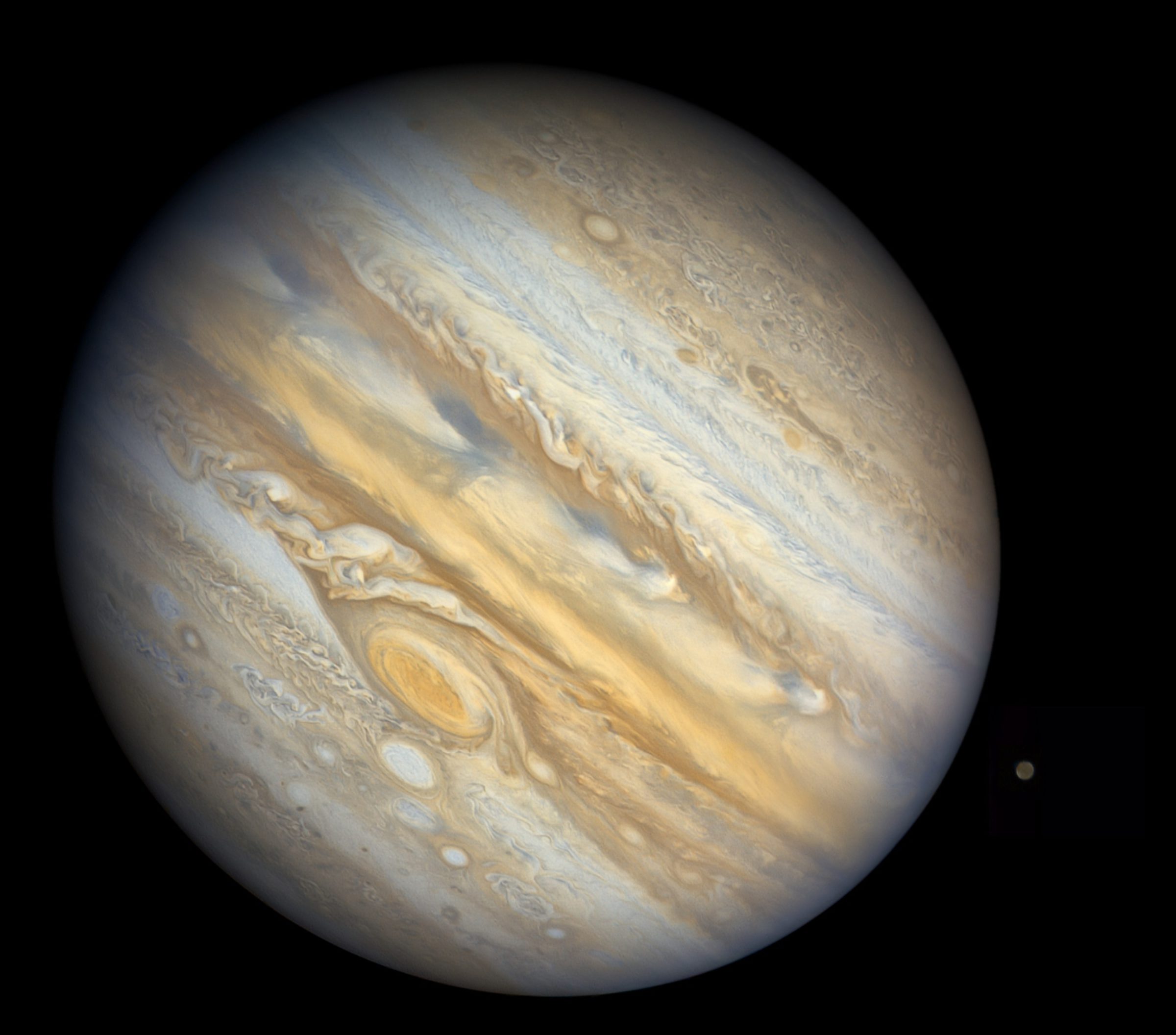
All Voyager images of Jupiter captured on approach were usually taken with the NAC, and evidence a about fully illuminated globe, with the morning terminator visible merely shy of the planet's unlit, western limb. As Voyager 1 grew closer to the planet, its trajectory gave its cameras a view of a fully illuminated Jupiter. On 2 March, the phase angle dwindled to every bit fiddling every bit 0.ii degrees, analogous to a typical full Moon every bit seen from Earth.
From that indicate onward, with closest approach just a few days away, Jupiter presented a markedly different confront to the spacecraft—one where the nighttime terminator now became visible on the eastern extent of the gaseous sphere.
I wondered if it would exist possible to reconstruct this seldom seen face up of Jupiter: a global portrait with the night terminator hugging the eastern limb. At this distance, narrow-angle imagery was all but useless for this purpose and data gathered by the lesser-celebrated wide-bending camera offered the just possibility.
For Voyager one, the broad-bending images captured over a 24-hour menses prior to closest approach were not sufficient, both in spatial and spectral coverage, to compile a representative colour mosaic of the planet. A great quantity of frames were trained (understandably) upon the Great Ruby-red Spot, leaving rather meager coverage of everything else.
However, I plant information technology possible to combine information collected through the orange, light-green, bluish, and occasionally violet, filters to produce the following mosaic of Jupiter's western limb, as seen past Voyager on the evening of March 4th, 1979:

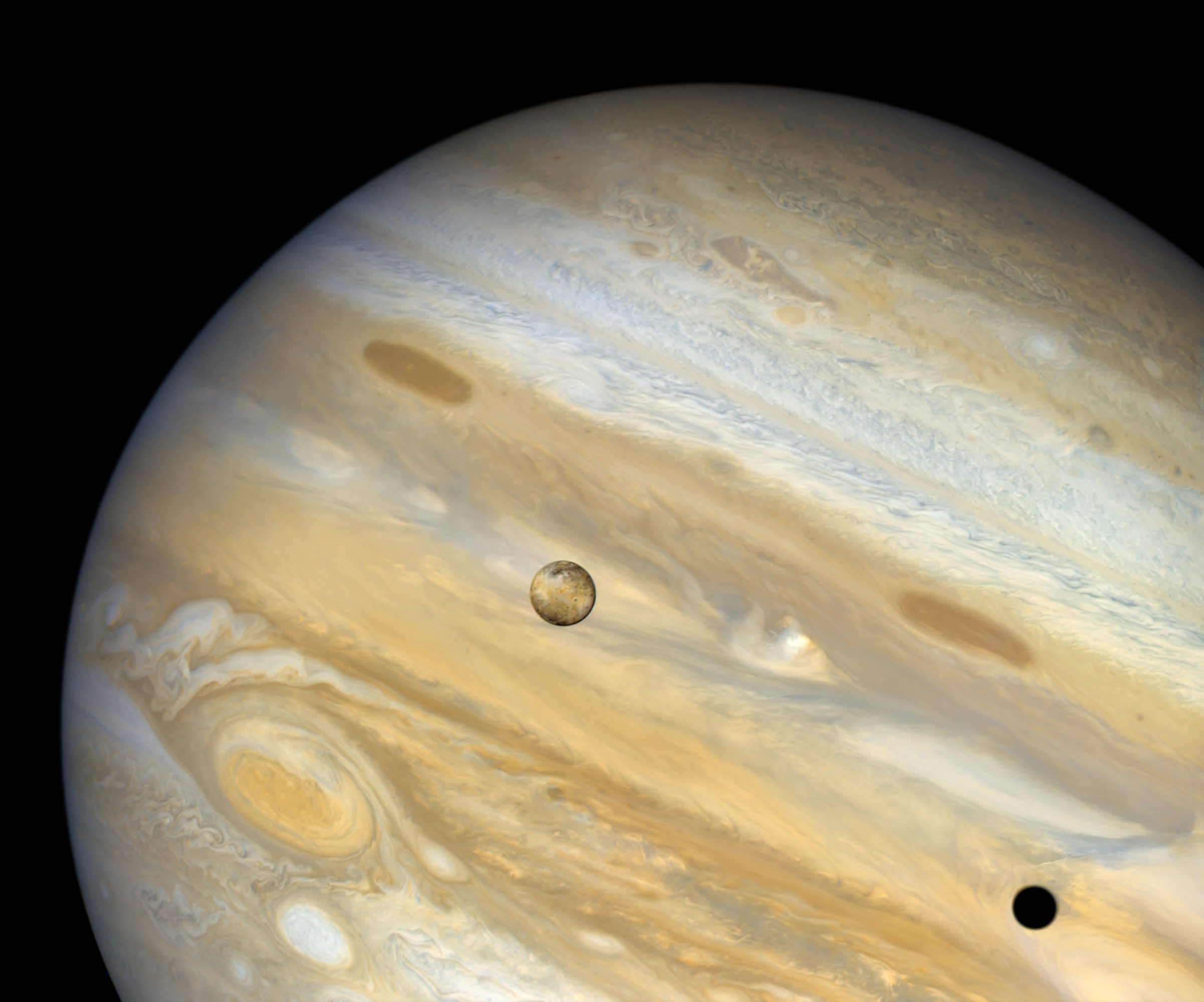
Io can be seen transiting the planet, as the Smashing Reddish Spot comes into view. Given that the iii principle WAC colour composites used were captured at 17:xi, 21:21, and 21:37 (all times UTC), the view is somewhat of a Frankenstein creation, equally Jupiter'southward rapid rotation ensures that atmospheric features seen here at different latitudes are non shown in proper relation to 1 some other. Despite this drawback, this mosaic gives a very effective if somewhat illusory impression of the face that Jupiter presented to Voyager 1, merely 14 hours earlier closest approach.
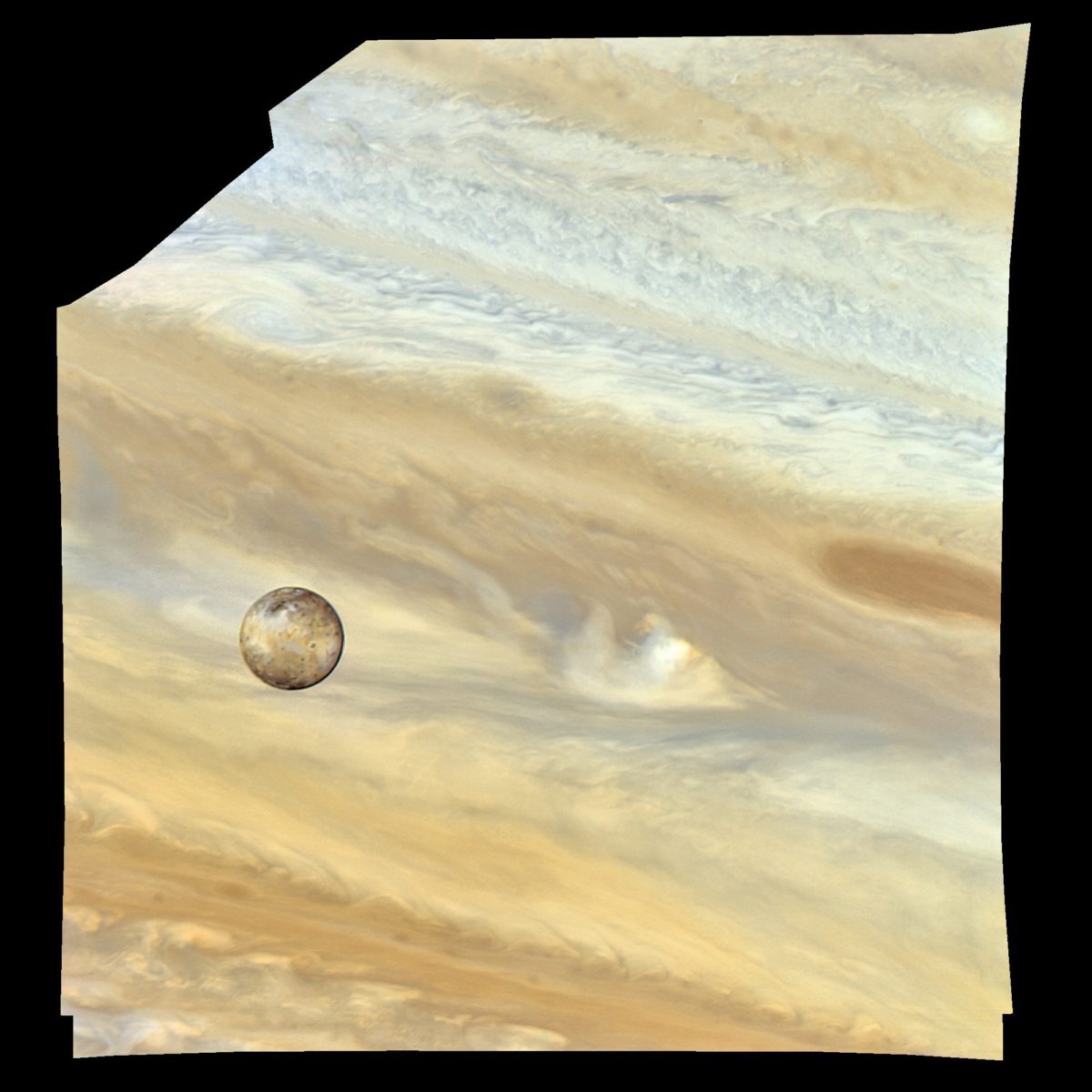
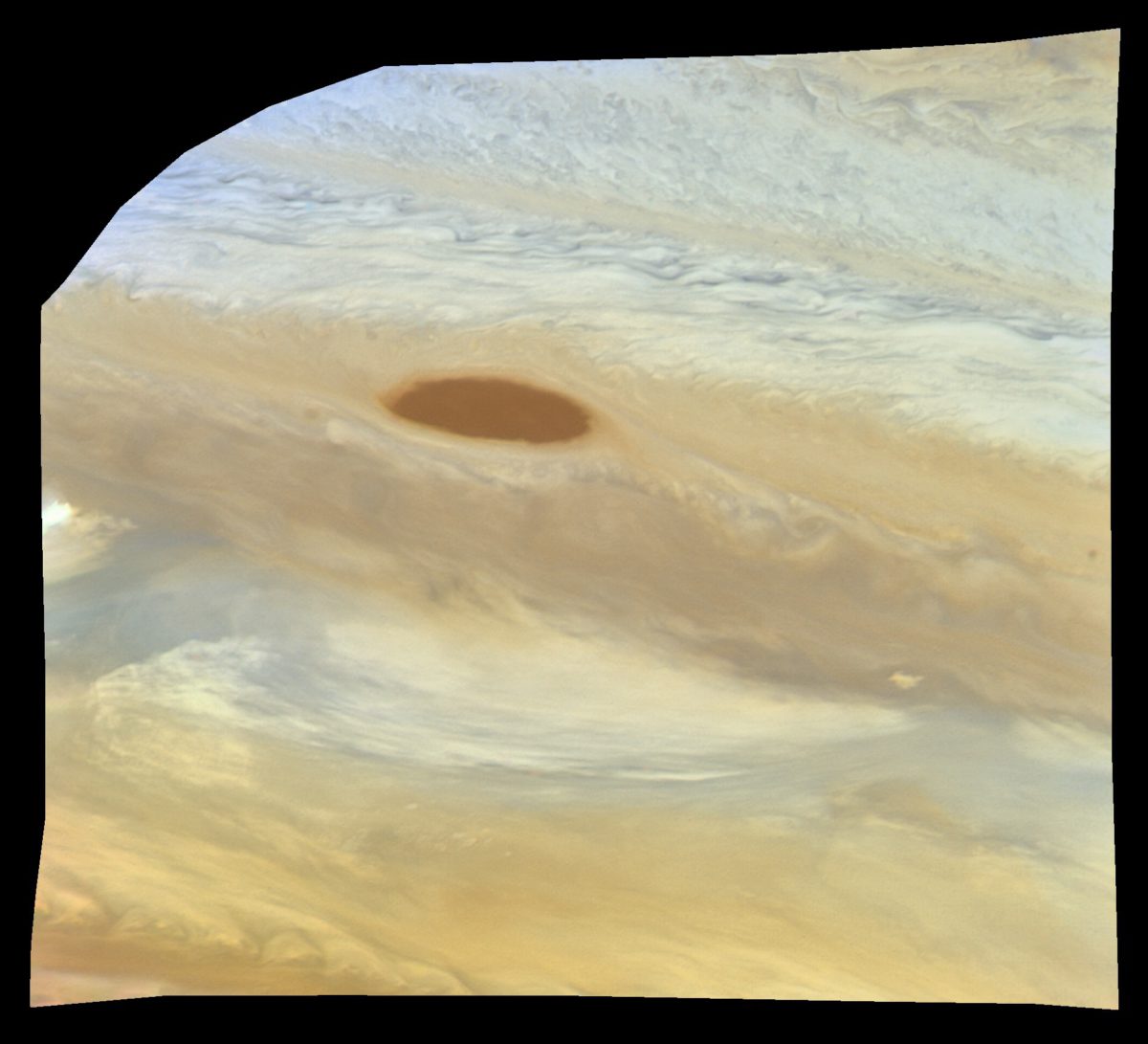

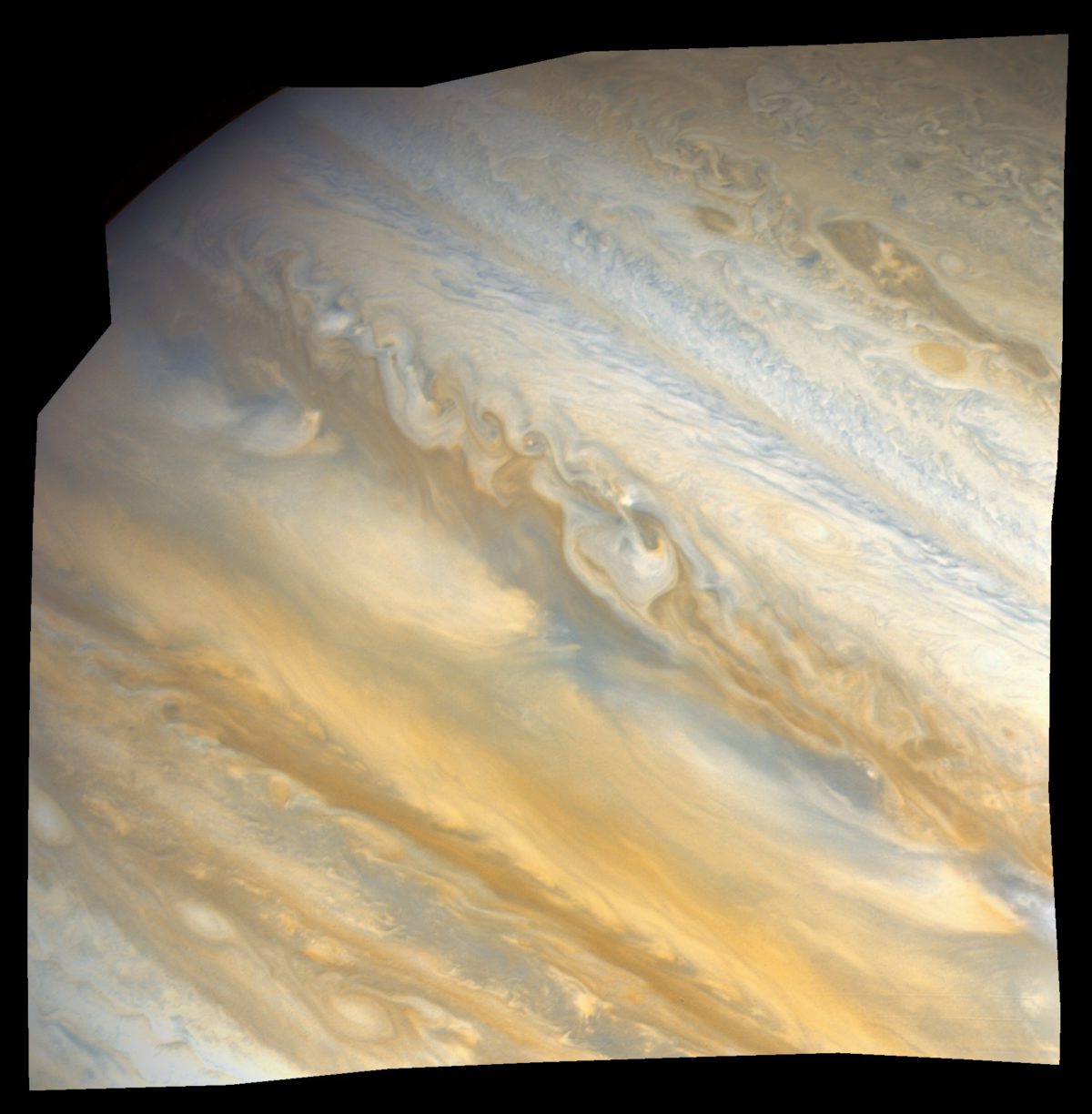
Voyager 2
Sixteen months later, the second Voyager (wielding a Television set camera with marginally greater sensitivity), focused on the Jovian system.
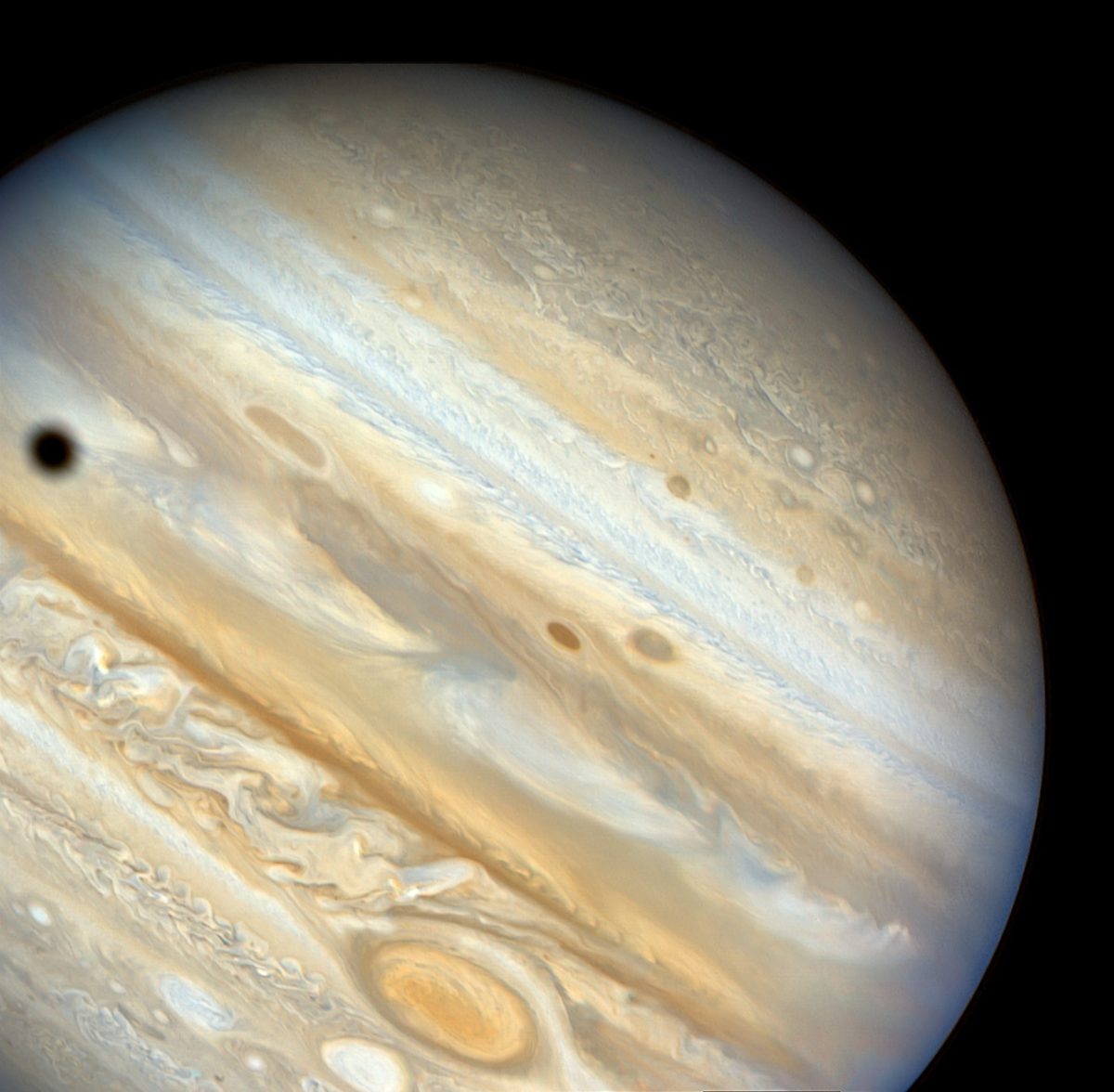
In the evening of eight July 1979, a mere 25 hours before closest arroyo, Voyager 2's WAC captured a more comprehensive array of images of Jupiter than its twin, assuasive a full globe portrait of the planet to be equanimous, from vi 3-filter colour composites (either OGB or OGV).
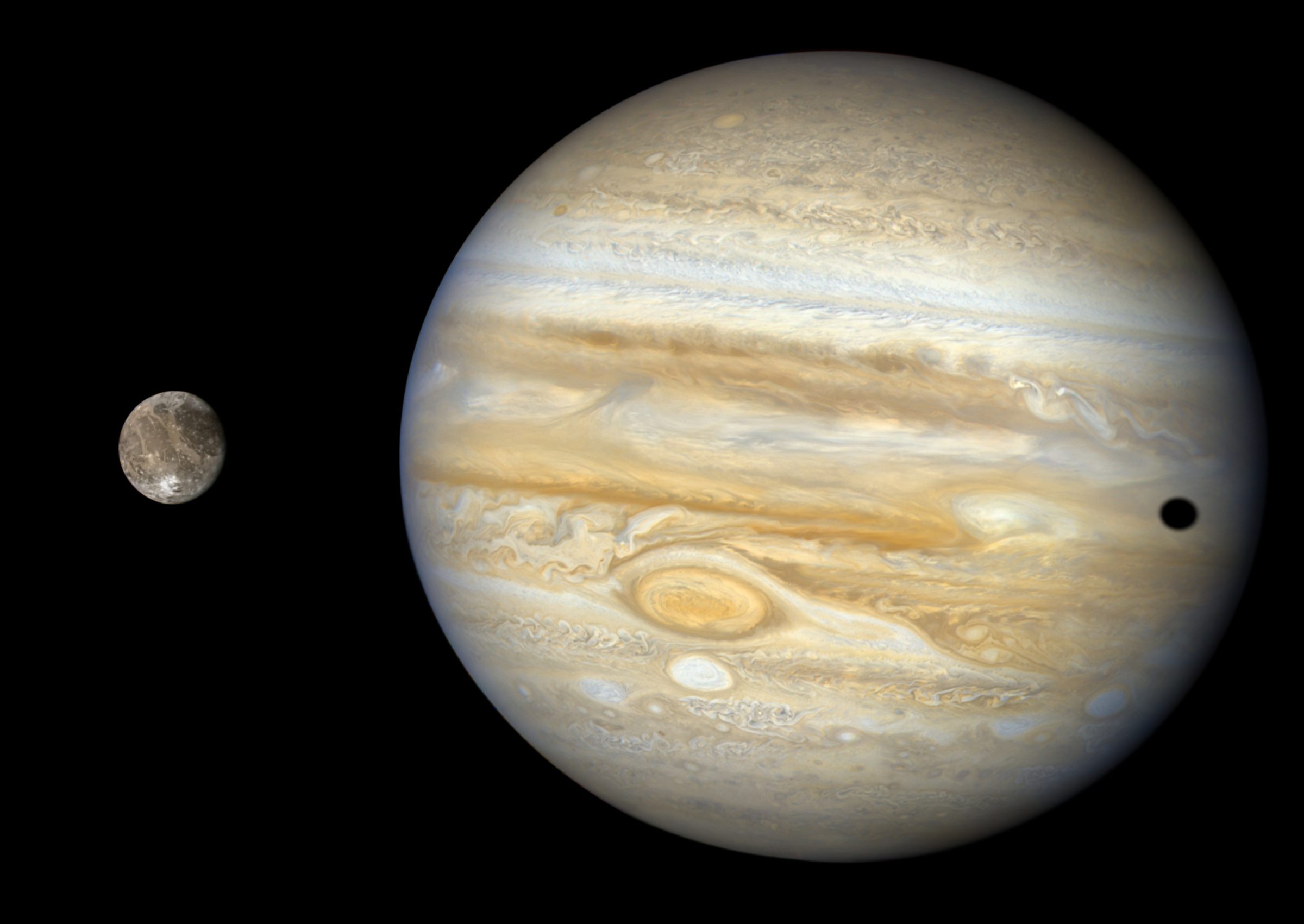
Once more, these observations spanned a non-trivial time period (from 18:32 to 22:35 UTC), so the relative longitudinal positions of various cloud features cannot exist trusted.
Equally an added bonus, the shadow of Ganymede was captured crossing the confront of Jupiter; it is shown here equally seen by the WAC at xx:04 hrs. In fact, afterwards these images were taken, Voyager 2 turned its suite of instruments toward the moon itself, capturing many images through both camera systems. A wide-angle color composite of Ganymede, taken as context for the higher resolution mosaics, has been added to the Jupiter mosaic to complete this panoramic vista.
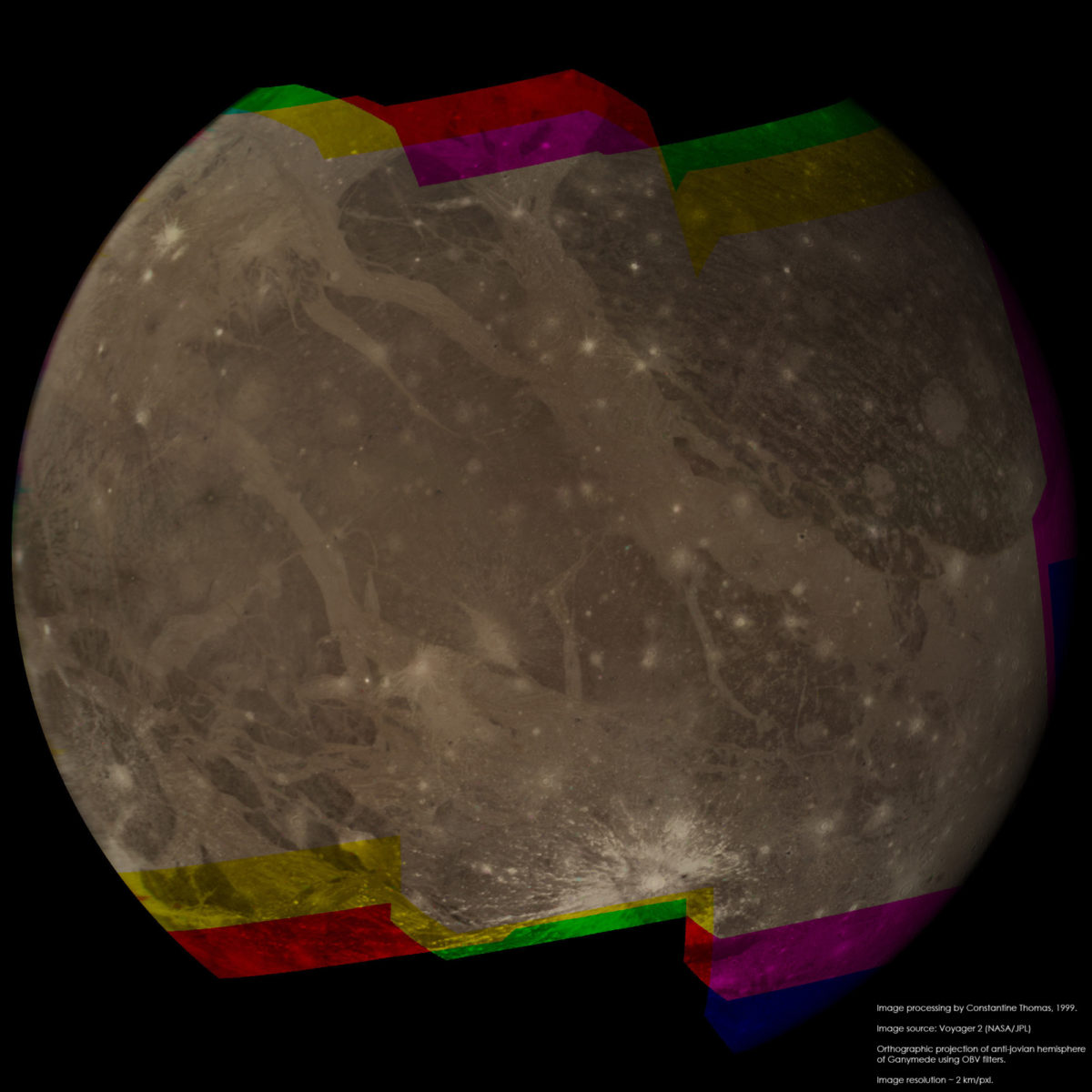
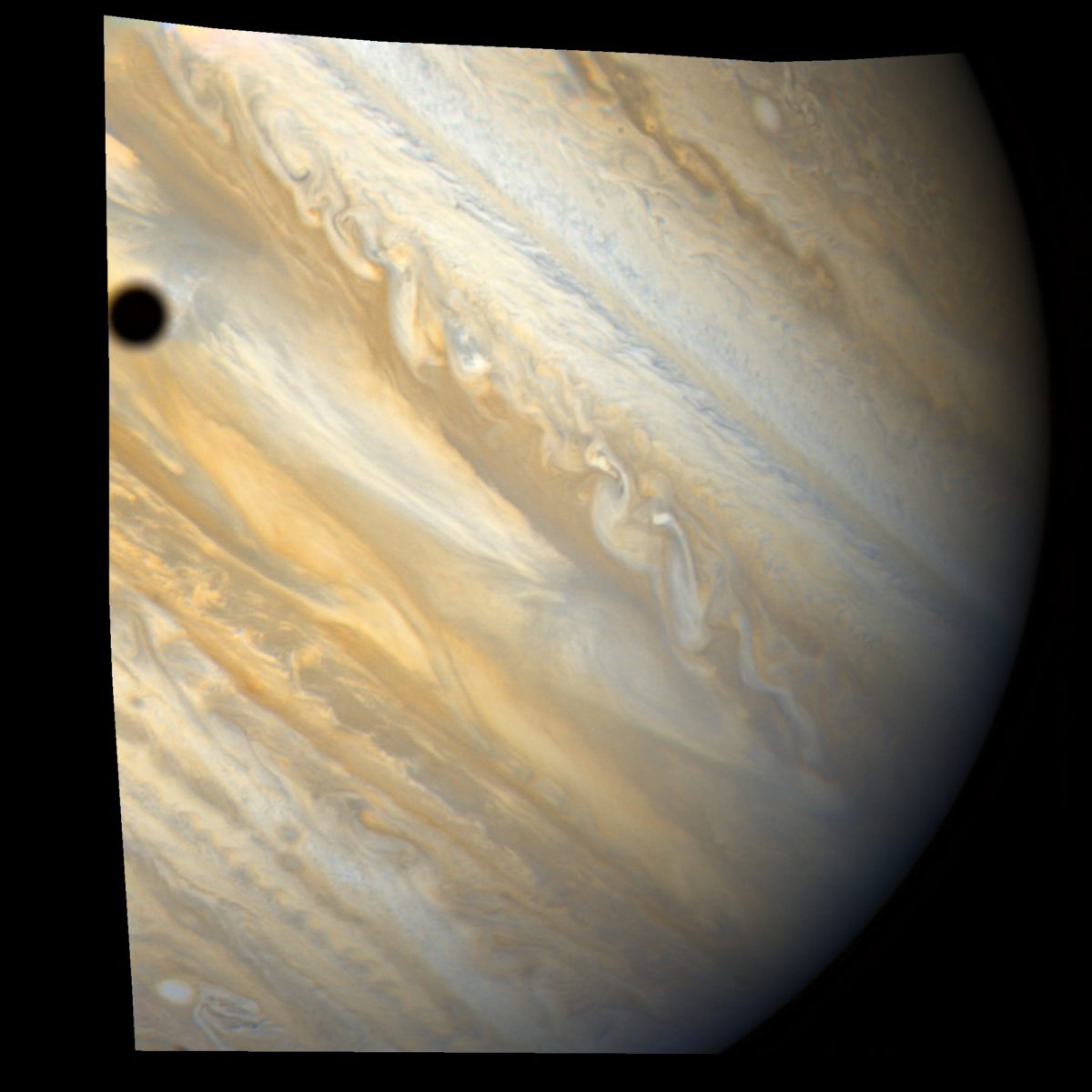
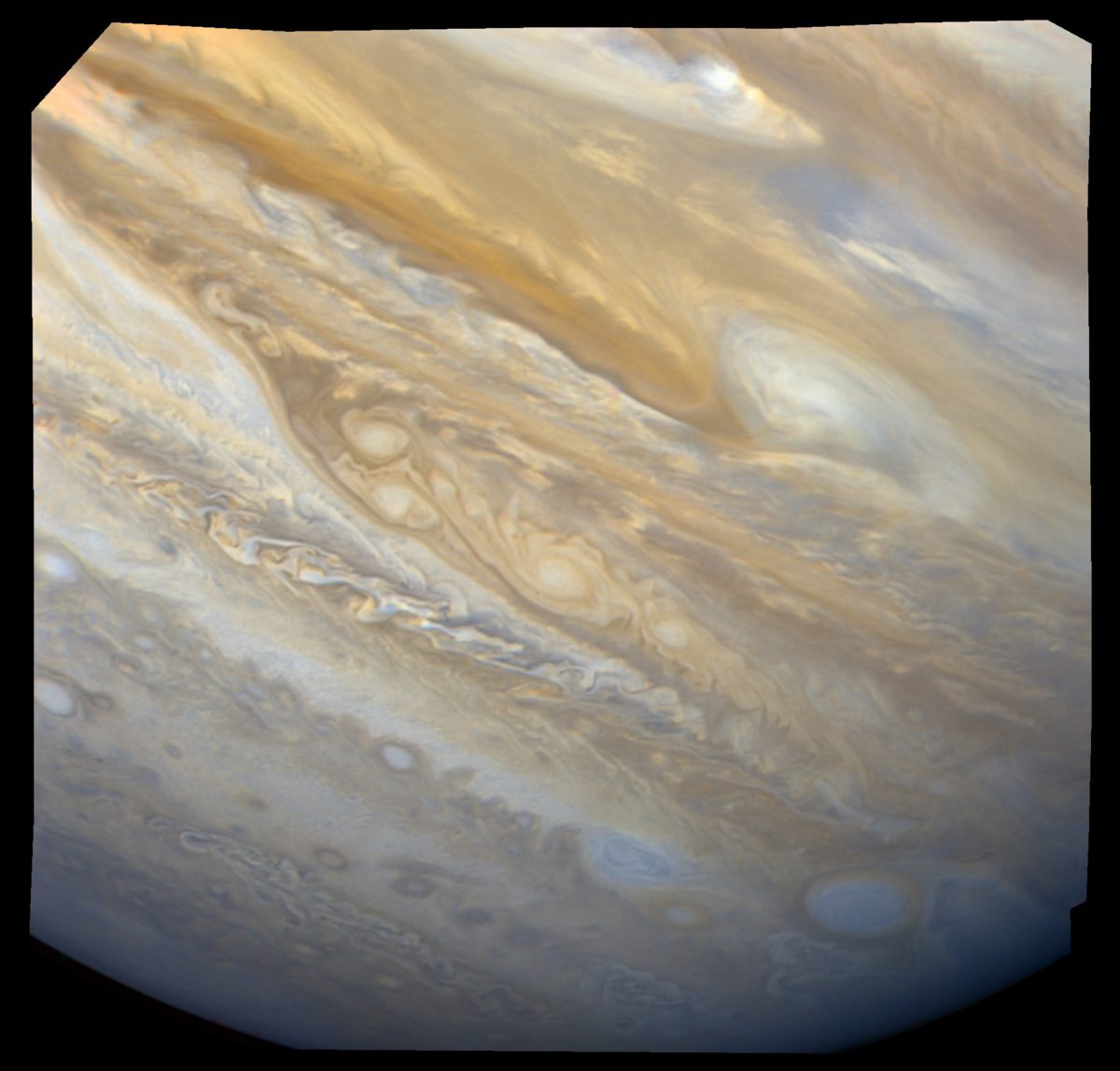
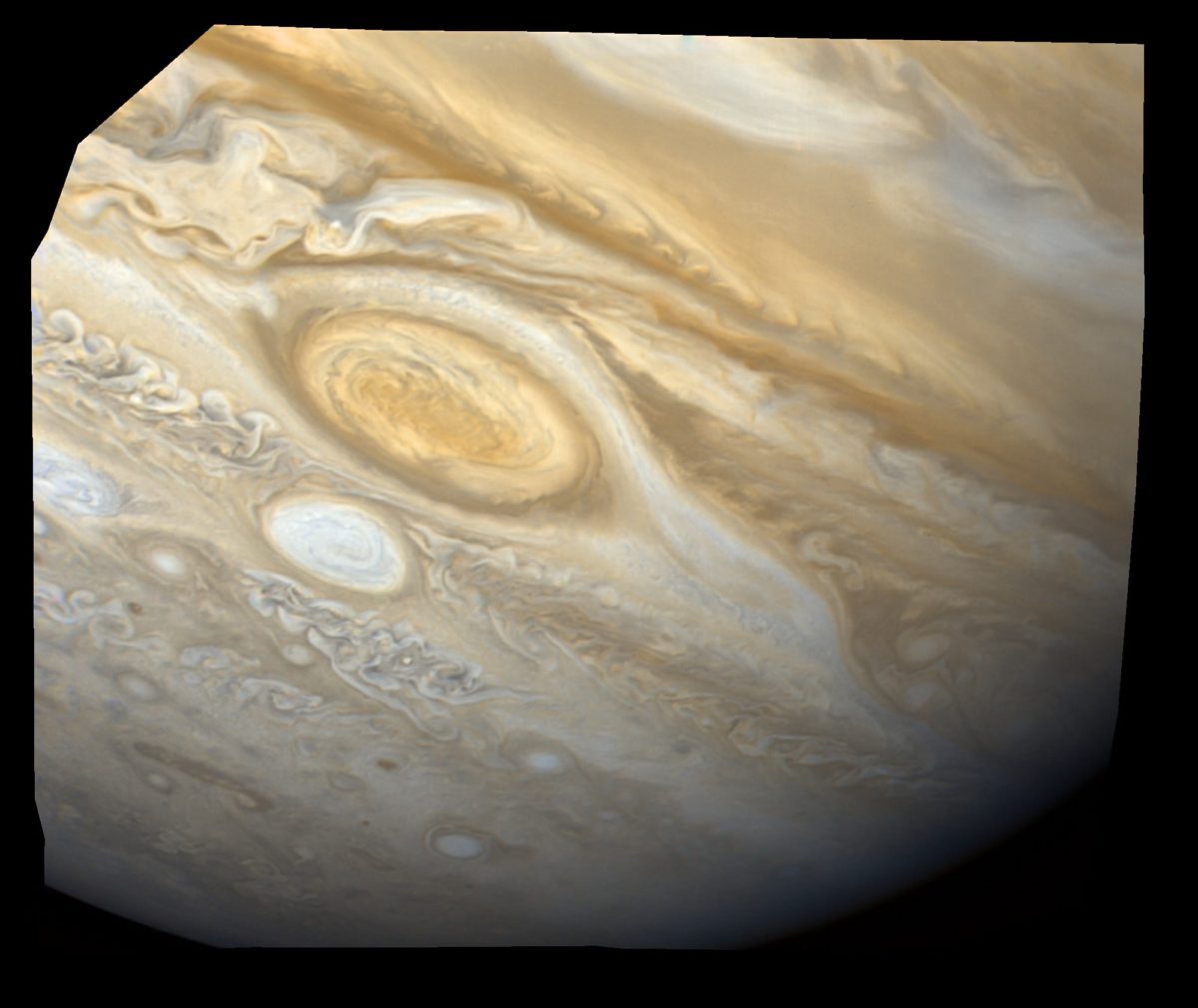
While later emissaries to Jupiter, nigh notably Cassini and New Horizons, captured views of Jupiter from this particular bending, these unique Voyager perspectives have been buried in archived information until at present. Long live the Voyagers!
Information technology's preventable … if we just look up!
Be a Planetary Defender! Power our work to defend Earth.
Donate Today

Empowering the world's citizens to accelerate space science and exploration.
Account Center • Contact Usa

Requite with confidence. The Planetary Society is a registered 501(c)(three) nonprofit organization.
© 2022 The Planetary Society. All rights reserved.
Privacy Policy • Cookie Declaration
Source: https://www.planetary.org/articles/voyager-wide-angles-jupiter
Posted by: blackwellcrientic.blogspot.com

0 Response to "Does Voyager 1 Have A Camera"
Post a Comment